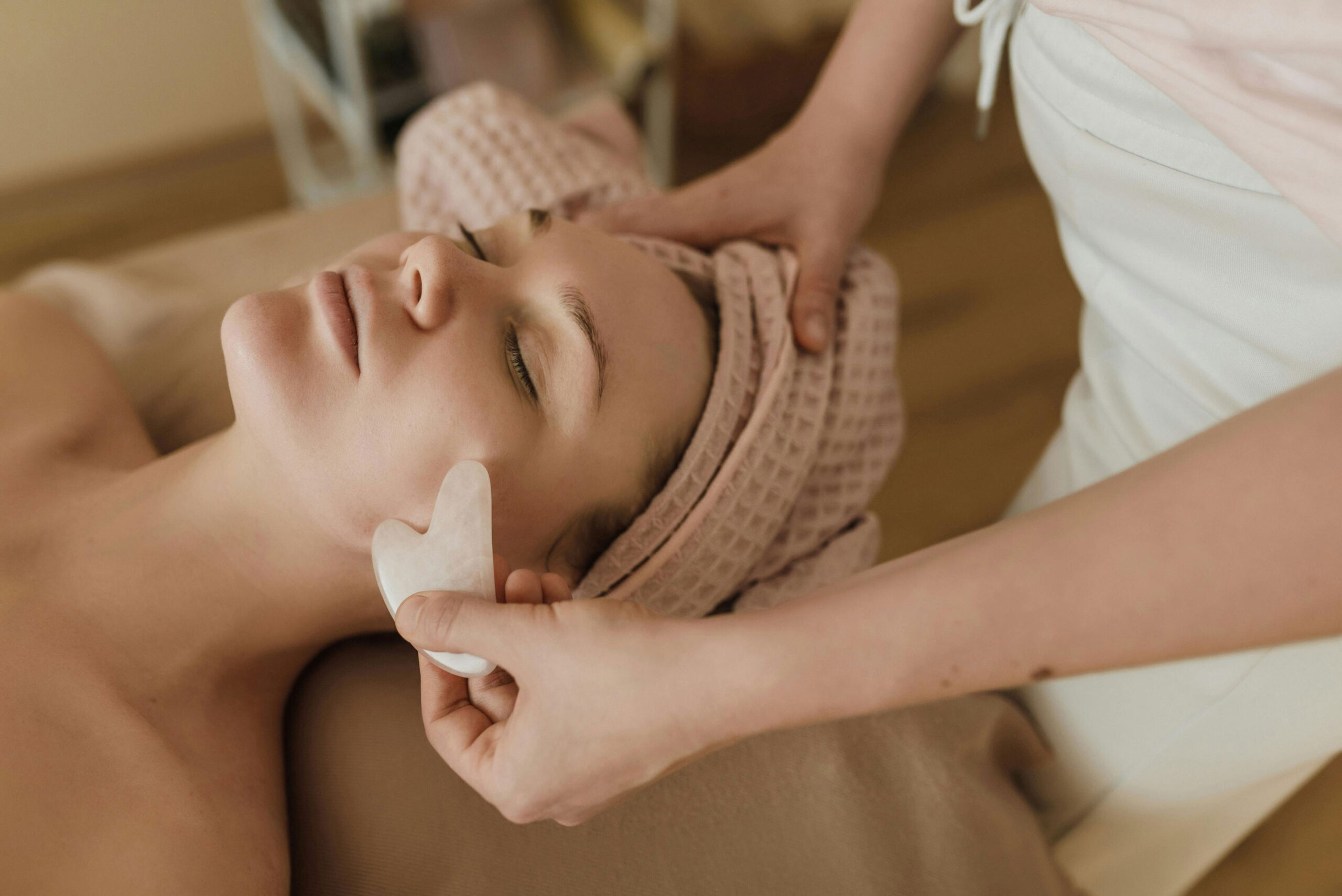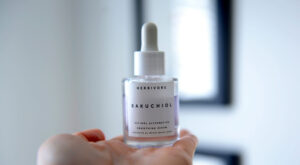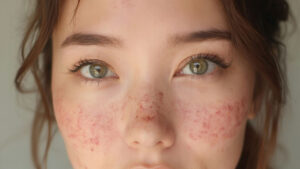Is your social feed littered with beautiful jade or rose quartz tools gliding across faces? That’s likely gua sha, an ancient healing technique that has found a new home in modern skincare routines. More than just a trend, gua sha offers a multitude of benefits, from reducing puffiness to promoting a healthy glow.
But what exactly is gua sha, and how can you effectively incorporate this practice into your daily skincare ritual? Let’s dive in.
What Exactly is Gua Sha? Understanding this Ancient Technique
Gua sha, pronounced “gwah-shah,” is a traditional Chinese medicine (TCM) practice that involves using a smooth-edged tool to stroke the skin. Historically, it was used on the body to address muscle pain and stimulate blood flow. In recent years, its gentler facial application has gained immense popularity in the beauty world.
The term “gua” means to scrape or stroke, and “sha” refers to the reddish, raised rash or petechiae that can appear on the skin during traditional body gua sha (though this is typically avoided in facial gua sha, which is much lighter). When applied to the face, the goal is to gently stimulate circulation, encourage lymphatic drainage, and relax facial muscles.
The Benefits of Incorporating Facial Gua Sha
Why are so many people integrating gua sha into their routines? The potential benefits are numerous:
- Reduces puffiness: By encouraging lymphatic drainage, gua sha can help move stagnant fluid, significantly reducing morning puffiness, especially around the eyes and jawline.
- Promotes Circulation: The gentle scraping action can increase blood flow to the skin, which brings oxygen and nutrients to the surface, contributing to a healthy, radiant complexion.
- Relieves muscle tension. Holding tension in the jaw (TMJ) or forehead can lead to fine lines and discomfort. Gua sha helps relax these facial muscles, potentially easing tension headaches and softening the appearance of wrinkles.
- Boosts product absorption. By stimulating the skin, gua sha can potentially enhance the absorption of your serums and oils, allowing them to work more effectively
- Sculpts and contours. Consistent use can give the appearance of more defined cheekbones and a sharper jawline by depuffing and releasing muscle tension.
- Reduces redness. Improved circulation and reduced inflammation from gentle massage can contribute to a more even skin tone. This complements the benefits of a green tea serum for reducing redness, which you might apply after your gua sha routine.
Choosing Your Gua Sha Tool: Materials and Shapes
Gua sha tools come in various shapes and materials, each with unique properties:
- Jade: Traditionally used, jade is known for its naturally cool temperature and soothing properties. It’s associated with calmness and balance. However, jade can be more fragile than metal and may chip or break if dropped.
- Rose Quartz: Also popular for its aesthetic appeal and association with self-love. It stays cool on the skin. Like jade, it can be fragile.
- Bian Stone: Touted for its unique mineral content and ability to emit ultrasonic pulses and far-infrared rays, believed to have additional therapeutic benefits. It’s robust but can be heavier and might have a slightly rougher texture requiring more oil.
- Titanium: Durable, hygienic, and hypoallergenic properties. Titanium has excellent thermal conductivity, and if you chill it in the fridge, it will retain the cold, providing a soothing and depuffing effect.
- Stainless Steel: Very similar to titanium in benefits. It’s highly durable, hygienic, and easy to clean. Often more affordable than titanium. It’s also non-porous and can maintain a cool temperature
Regardless of the material, look for a tool that feels comfortable in your hand and has various curves and edges to fit the contours of your face.
How Do I Incorporate Gua Sha Into My Skincare Routine?
Timing is key when integrating gua sha. It should always be performed on clean skin with a good amount of slip to prevent tugging.
Step-by-Step Morning Gua Sha Routine
Your morning gua sha can help reduce overnight puffiness and awaken your skin.
- Cleanse. Start with a gentle facial cleanser to wash away any overnight buildup.
- Hydrate & slip. Apply a generous amount of facial oil or a rich serum to your face and neck. This is crucial for creating enough slip so the tool glides smoothly without pulling your skin.
- Consider a nourishing facial oil, such as a cruelty-free vitamin E oil for dark spots, as it provides excellent slip while also offering skin benefits. For additional hydration, you could even mix a drop or two of your oil with a hypoallergenic aloe vera moisturizer or green tea serum for reducing redness for even more glide and soothing benefits.
- Perform gua sha strokes. Using light to medium pressure, perform 3-5 strokes per area, always moving upwards and outwards.
- Neck: Start at the base of your neck and stroke upwards towards your jawline.
- Jawline: Use the notched edge of the tool to hug your jawline, stroking from the center of your chin out towards your ear.
- Cheeks: Use the long, flat edge to sweep from the side of your nose out towards your hairline.
- Under-eyes: Very gently use a curved edge from the inner corner outwards towards your temples. Use extremely light pressure here.
- Forehead: Stroke upwards from your eyebrows to your hairline, and then from the center of your forehead outwards towards your temples.
- Clean your tool. Rinse your gua sha tool with soap and water after each use.
Step-by-Step Evening Gua Sha Routine
Your evening routine can focus on relaxing facial muscles and aiding in product absorption.
- Double cleanse. Especially if you wear makeup or SPF, double cleansing ensures your skin is thoroughly clean.
- Tone. Follow with your preferred toner to balance pH and prep your skin.
- Hydrate & slip. Apply your facial oil or serum generously.
- Perform gua sha strokes. Perform the same strokes as in the morning, focusing on relaxing tension points.
- Apply remaining skincare. After your gua sha session, your skin should be prepped for further treatments. This is an excellent time to apply a fragrance-free retinol cream (if it’s a retinol night for you) as its absorption might be enhanced. Follow with your hypoallergenic aloe vera moisturizer or other preferred night cream.
- Clean your tool.
Important Tips for Safe and Effective Gua Sha
- Always use oil/serum. Never perform gua sha on dry skin. Sufficient slip is paramount to prevent pulling and damaging your skin.
- Gentle pressure. For facial gua sha, use light to medium pressure. You should not feel pain or see prominent red marks (sha).
- Angle is key. Hold the tool nearly flat against your skin (about a 15-degree angle) rather than perpendicular.
- Consistency. Like any skincare practice, consistency yields the best results. Aim for 3-5 times a week, or even daily if your skin tolerates it.
- Hydrate internally. Drink plenty of water throughout the day to support lymphatic drainage.
- Consult a professional. If you have any underlying skin conditions or concerns, consult a dermatologist or licensed aesthetician before starting gua sha.
Frequently Asked Questions
How often should I do facial gua sha?
You can perform facial gua sha daily, both morning and night, if your skin tolerates it. Many people find benefits from 3-5 times a week. Listen to your skin and adjust the frequency based on its response.
Can gua sha cause breakouts or acne?
If performed on unclean skin or with a dirty tool, gua sha can potentially spread bacteria and lead to breakouts. Ensure your face is thoroughly cleansed before starting, and always clean your gua sha tool after each use. Proper technique and sufficient slip are also crucial to avoid irritating existing breakouts or sensitive areas.
What kind of oil should I use for gua sha?
You should use a non-comedogenic facial oil or a rich serum that provides ample slip. Good options include jojoba oil, argan oil, rosehip oil, or a hydrating facial serum.
How long does it take to see results from gua sha?
Results can vary, but many people notice an immediate reduction in puffiness and improved circulation after just one session. More significant benefits like reduced tension and improved contouring may take a few weeks of consistent use to become apparent.
Can gua sha help with hyperpigmentation or dark spots?
While gua sha primarily focuses on lymphatic drainage and circulation, improved blood flow and reduced inflammation can indirectly support overall skin health, which might contribute to a more even skin tone over time. However, it is not a primary treatment for skincare for hyperpigmentation or dark spots. For these concerns, continue to rely on targeted ingredients like Vitamin C, retinol, and SPF.
Can I do gua sha if I have sensitive skin or rosacea?
If you have highly sensitive skin, rosacea, or active inflammatory conditions, proceed with caution and consult a dermatologist before starting gua sha. Use extremely light pressure, focus on lymphatic drainage (very gentle strokes), and avoid any areas with active flare-ups or broken skin.
The content provided in this blog is for informational and educational purposes only. All product recommendations and skincare suggestions are intended to serve as general guidance and should not be considered a substitute for professional advice. Individual skin types and conditions vary, so please use discretion when incorporating new products or routines. We strongly recommend consulting with a licensed dermatologist or qualified healthcare professional before beginning any new skincare treatments, especially if you have sensitive skin, pre-existing conditions, or are currently using prescribed medications.
Note: All product links are for informational purposes and do not constitute endorsements. Always perform a patch test before introducing new products into your routine.





